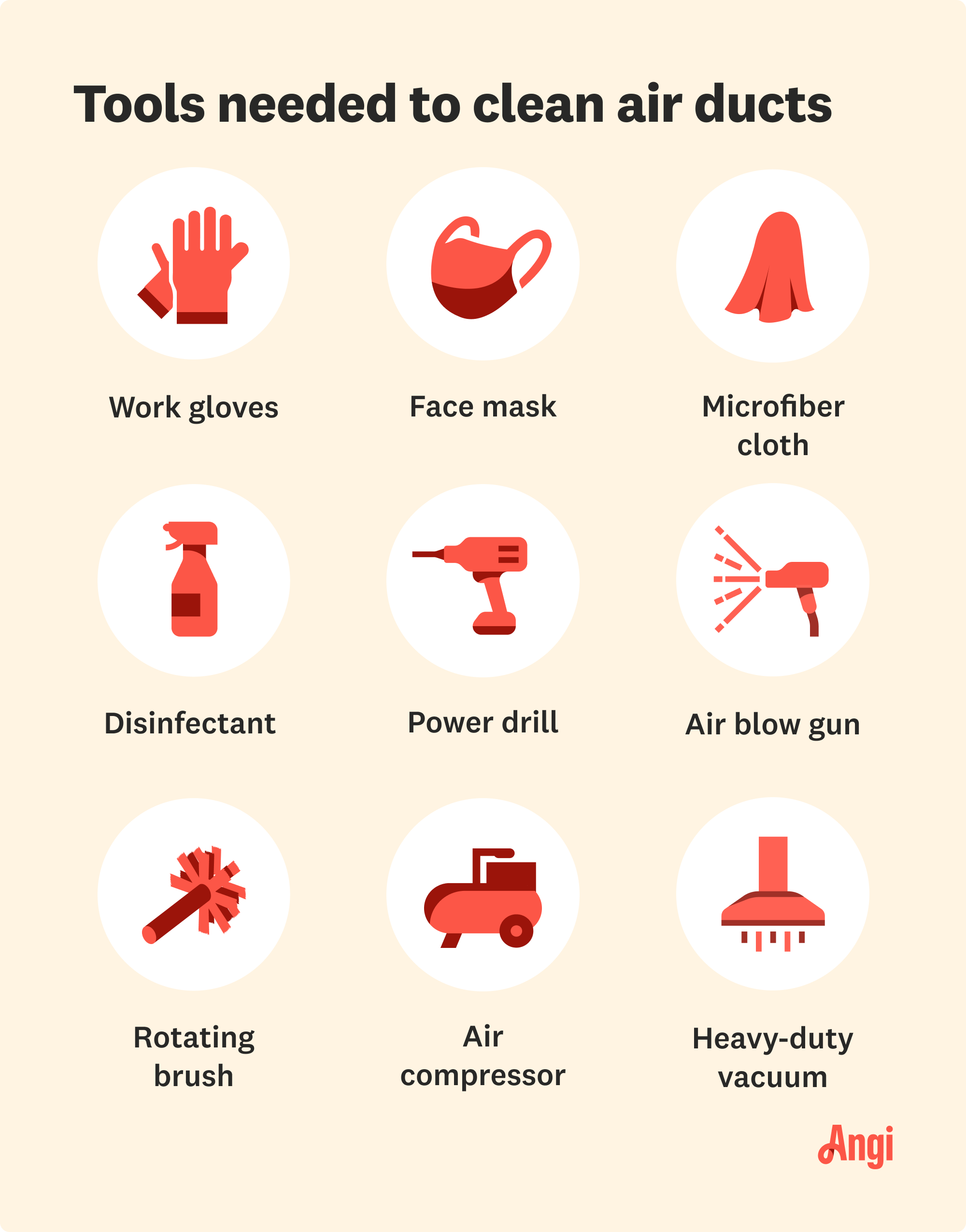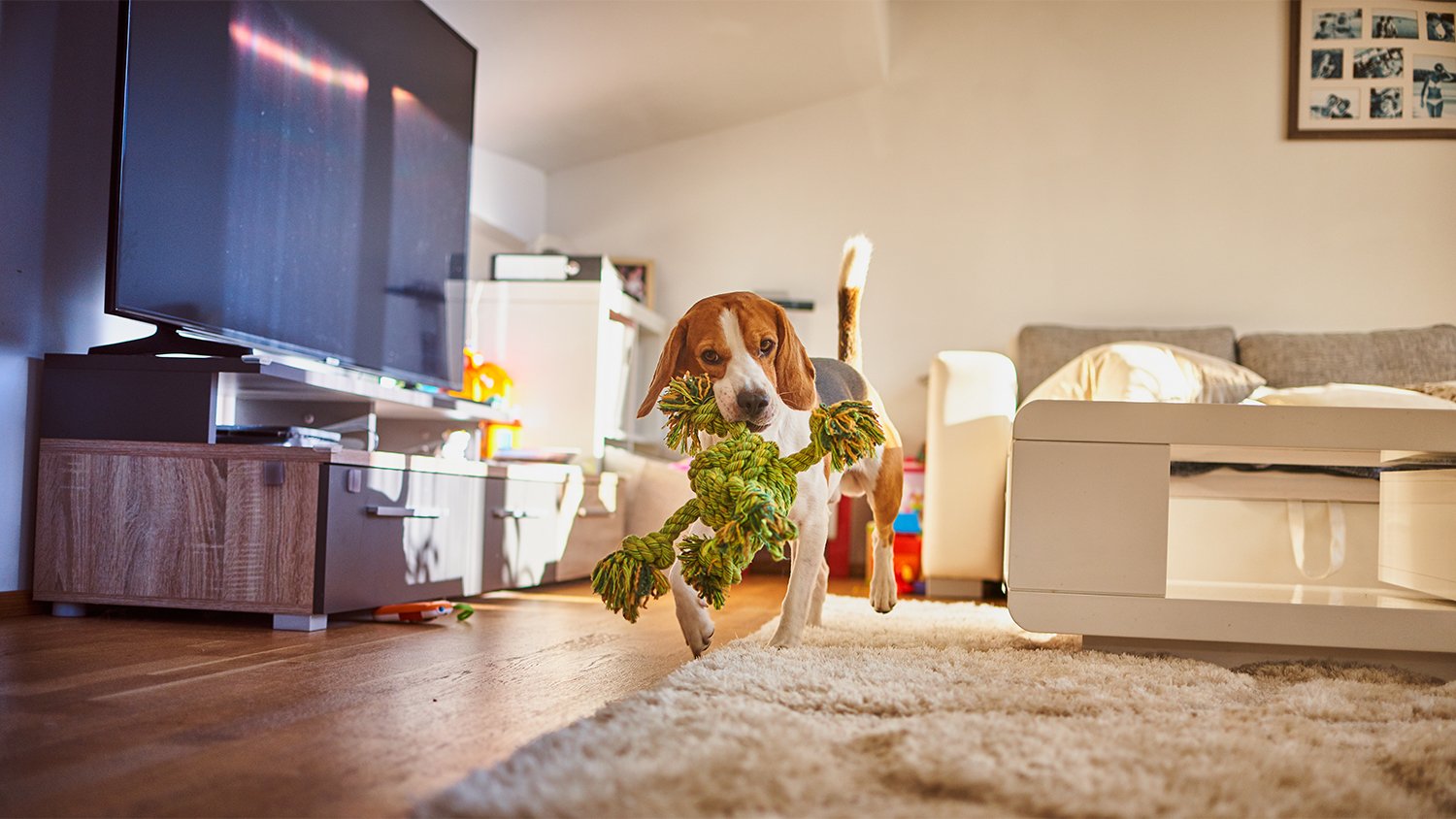
Whole-house air purifier costs depend on a variety of factors, including your home’s size and layout. The type of purifier you choose matters, too.
Deduct dander from your HVAC system
It’s no secret that Americans love their pets. But pet dander allergies cause congestion, sneezing, itchy or watery eyes, shortness of breath, and hives. If dander gets in your air ducts, it can spread around the home and exacerbate residents’ allergy symptoms. This guide explains what to do about pet dander in air ducts so you can enjoy an allergy-free home.
If you have smokers or pets with lots of hair in your home, or if your community is known for having poor air quality, you should have your air ducts inspected and cleaned more often.
Your HVAC filters trap particles, dust, and pet dander to keep the air clean. But if you don’t change your filters often enough, those particles will find their way into your home and can affect your allergies. Disposable air filters last between three and 12 months, depending on the filter type and thickness. An HVAC technician can advise if you’re unsure how often to change your air filter.

There’s no set interval at which you should clean your air ducts. The National Air Duct Cleaning Association (NADCA) and the U.S. Environmental Protection Agency (EPA) recommend air duct cleaning as needed rather than every few years. But if you have pets, it could be beneficial to clean them regularly to keep dander levels down.
Dry air can exacerbate allergy symptoms and increase your risk of respiratory illness. The EPA recommends keeping the humidity level in your home between 30% and 50% for the best air quality. If your home’s humidity is less than this, installing a humidifier can help. A whole-house humidifier costs $390 to $770 to install, with an average price of $580.
Air purifiers sanitize the air in a home to decrease allergens like pet dander. Installing a whole-house air purifier costs $420 to $4,960, or $2,610 on average. This type of purifier can reduce pet dander in the air vents throughout the home. Alternatively, a portable air purifier can be used in a single room, costing as little as $60.
Regular cleaning can help keep pet dander from entering your air ducts and circulating around your home. Vacuum and mop floors and wash bedding often—especially in areas your pets frequent, like the living room or bedroom. If you struggle to keep up with cleaning your home, see whether professional house cleaning costs will fit in your budget.

In addition to keeping your home clean, keeping your pets clean can reduce the amount of dander in your home (and, therefore, your air ducts). If you have a dog, wash them once a week and brush them daily to decrease dander accumulation. Cats are usually more challenging to bathe but can still be brushed regularly to prevent them from shedding as much fur and dander.
Although your pet is a cherished family member, that doesn’t mean they should have free rein in the house. Use doors and pet gates to create pet-free areas to manage pet dander in your home. Consider keeping your pets out of the bedrooms—especially the bedrooms of any allergy sufferers.

The most common sign of pet dander in air vents is increased allergy symptoms. If you notice your allergy symptoms worsening but haven’t changed anything in your home (like adding another pet), your air vents might be to blame. Another sign of pet dander in air vents is seeing more dust and debris than usual in the home or noticing debris blowing out of the air vents.
Clogged air vents can also make your HVAC system work harder. Therefore, if you notice that your heating or AC is running more than usual or struggling to maintain a comfortable temperature, pet dander in the vents could be to blame.
With the right tools and supplies, cleaning your air vents can be a DIY project. However, DIY cleaning won’t remove lingering pet dander or dust deep in the ductwork. It’s best to leave air duct cleaning to the pros if you have excessive buildup or notice signs of mold or pest infestation in your air ducts.
A local air duct cleaning service will have the proper equipment to deep-clean your air vents and thoroughly remove pet dander from the ductwork. Air duct cleaning costs $270 to $510, with an average of $390.
From average costs to expert advice, get all the answers you need to get your job done.

Whole-house air purifier costs depend on a variety of factors, including your home’s size and layout. The type of purifier you choose matters, too.

Curious about air duct cleaning costs? Get insights into pricing factors, benefits, and how to tell when it’s time for a good cleaning.

Are you wondering what to expect when your ductwork is cleaned? We explain the air duct cleaning process that professional HVAC technicians follow.

Don’t fall victim to air duct cleaning ripoffs and scams! Make sure you understand these 5 common scams to avoid throwing away money on your HVAC system.

Can dirty air ducts make you sick? Find out how dirty HVAC ductwork impacts indoor air quality and can even affect your health.

If you suspect foul odors are coming from your air ducts, know that air duct cleaning does not always help with smell. Consult this guide to determine the best solution.